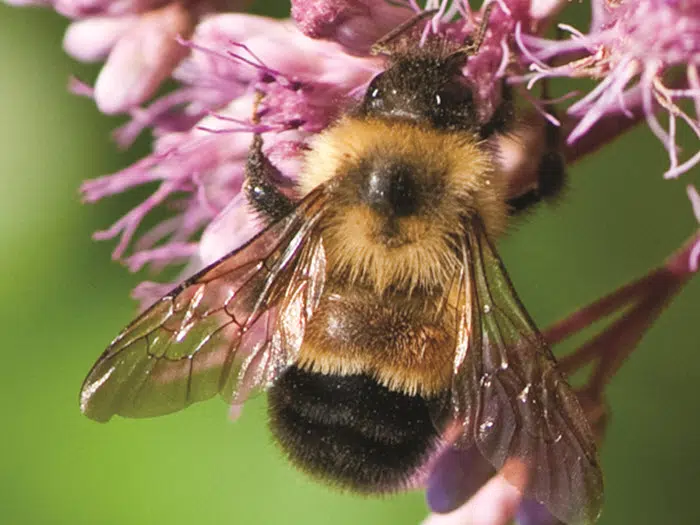
photo credit: U of M Exension
New research from the U.S. Department of Agriculture’s Agricultural Research Service (USDA-ARS) sheds light on the causes behind the catastrophic honey bee colony losses reported by commercial beekeepers earlier this year. The findings point to alarmingly high levels of viral infections—vectored by Varroa destructor (Varroa) mites with resistant genes to a common treatment—as key drivers of colony collapse.
The study, which analyzed samples from six major commercial beekeeping operations affected by the losses, provides the most detailed evidence to date of the biological factors behind the widespread die-offs. Collectively, these operations managed nearly 184,000 colonies—roughly 7% of all U.S. hives—and reported losses averaging over 60%, just as bees were being staged for California’s almond pollination season.
“The beekeeping and bee health community appreciates the work of the USDA-ARS bee research laboratories. They quickly took samples of lost colonies and now that they’ve released the analysis, beekeepers can better understand what happened and take action,” said Matt Mulica, senior project director at Keystone Policy Center, which facilitates the Honey Bee Health Coalition. “We understand more analysis is occurring and we look forward to learning more about the other potential causes of these significant colony losses.”
Researchers found high levels of Deformed Wing Virus (DWV-A and DWV-B) and Acute Bee Paralysis Virus in both pooled colony samples and individual bees showing shaking and other signs of morbidity. Experimental inoculation further confirmed these viruses as the likely cause of mortality in collapsing colonies.
Crucially, all Varroa mites collected from affected colonies tested positive for a genetic marker linked to resistance to amitraz, the most commonly used miticide in commercial beekeeping. This finding underscores the urgent need for new tools and integrated pest management strategies.
“This is a critical moment for honey bee health,” said Patty Sundberg, president of the American Beekeeping Federation. “We can’t continue relying on a single line of defense against Varroa. These mites are evolving quickly, and our management tools must evolve just as fast. We also need to find treatments for these viruses and we await the release of how pesticide exposure and poor nutrition amplify the impacts from these viruses.”
While viruses and Varroa were confirmed as primary contributors, the USDA-ARS research also acknowledges other stressors—including pesticide exposure, poor nutrition, and environmental conditions— may have exacerbated the losses.
“The findings released this week are a crucial first step in providing beekeepers actionable information,” added Steven Coy, president of the American Honey Producers Association. “It highlights the necessity for additional miticides and methods of controlling Varroa and the associated viruses. We urge the USDA to provide the results of the impacts of nutritional, chemical and environmental stress as soon as possible. Beekeepers need a complete picture of what happened in order to make sound decisions regarding the health of our colonies.”
In 2021, the Honey Bee Health Coalition published Guide to Varroa Mite Controls for Commercial Beekeeping Operations, which laid out a vision that addresses the risks of amitraz resistance created by off-label use. The continuous use of off-label amitraz, with increasing dosages (as it becomes less effective), is likely to cause amitraz to lose its effectiveness, just as other products like coumaphos and tau-fluvalinate have become largely ineffective for controlling Varroa mites.
The Honey Bee Health Coalition continues to support innovation in honey bee health, including research, tool development, and education aimed at helping beekeepers and farmers manage evolving threats. The Coalition will release an updated version of its Tools for Varroa Management guide later this year. The guide is a key resource for beekeepers, providing science-based strategies for monitoring and controlling Varroa populations.
The USDA-ARS researchers have submitted a manuscript to a scientific journal for peer review. To access the full study, visit: https://www.biorxiv.org/
Source: Honeybee Health Coalition




Comments